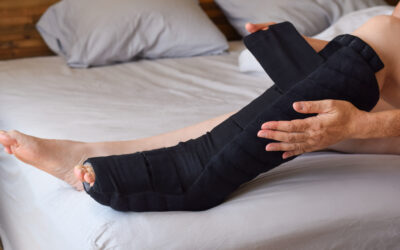Physical therapy (PT) plays a critical role in the recovery and rehabilitation process for patients who have experienced a stroke or suffer from neurological disorders. These conditions often lead to impairments in mobility, strength, coordination, and overall function. Physical therapy can help patients regain independence, improve movement, and enhance their quality of life. In this blog, we’ll explore how PT helps treat stroke and neurological disorders, focusing on specific techniques, approaches, and long-term benefits.
Understanding Stroke and Neurological Disorders
- Stroke occurs when the blood supply to the brain is interrupted, leading to brain cell damage. This can result in partial paralysis, speech difficulties, and loss of motor skills.
- Neurological disorders, such as Parkinson’s disease, multiple sclerosis (MS), and cerebral palsy, affect the nervous system, impairing movement, coordination, and other vital functions.
Both conditions can severely impact daily life, but physical therapy is one of the most effective treatments for improving mobility and function.
The Role of Physical Therapy in Stroke and Neurological Rehabilitation
Physical therapy for stroke and neurological conditions focuses on restoring as much function as possible, depending on the severity of the condition. The goal is to promote neural plasticity (the brain’s ability to reorganize itself) and improve motor control, balance, and coordination. Here’s how PT can help:
1. Restoring Mobility and Movement
After a stroke or due to neurological disorders, many patients experience a loss of mobility or control over certain muscles. Physical therapists work with patients to:
- Strengthen weakened muscles: Specific exercises target muscles weakened by the condition, helping to restore strength and control.
- Improve coordination: PTs use coordination exercises to help patients regain control over their limbs, hands, or other parts of the body affected by the stroke or disorder.
- Increase flexibility: Stretching routines and passive movement techniques are used to prevent stiffness and improve range of motion.
2. Gait Training and Balance Restoration
Many stroke survivors and individuals with neurological disorders struggle with walking due to balance issues or muscle weakness. Gait training helps to:
- Improve walking ability: Therapists use exercises, assistive devices (e.g., walkers, canes), and sometimes robotic technologies to help retrain the body to walk correctly.
- Enhance balance: Through balance exercises, patients can regain the stability needed to reduce the risk of falls and improve confidence in moving independently.
- Correct posture: Proper posture is essential for efficient movement. PT helps patients develop proper alignment and movement patterns to reduce strain and injury.
3. Functional Task Training
Task-oriented training is a crucial component of PT for neurological disorders and stroke. The therapist helps the patient perform functional tasks such as:
- Standing up from a seated position
- Grasping and holding objects
- Reaching overhead or in different directions
By repeating these tasks in therapy sessions, the brain re-learns how to control these movements, allowing the patient to regain independence in daily activities.
4. Strengthening Neural Pathways Through Neuroplasticity
Physical therapy promotes neuroplasticity, the brain’s ability to rewire itself after damage. Repetitive exercises and movement patterns help strengthen neural connections, enabling patients to:
- Recover lost motor functions
- Adapt to new ways of moving or compensating for impairments
- Relearn activities of daily living (ADLs) like dressing, eating, and grooming
5. Managing Spasticity and Muscle Tone Issues
After a stroke or in neurological disorders like cerebral palsy, patients often suffer from spasticity, which is an abnormal increase in muscle tone or stiffness. Physical therapy can help by:
- Using stretching exercises to improve muscle flexibility
- Applying manual therapy to relax tight muscles and improve range of motion
- Teaching positioning techniques to prevent contractures (permanent tightening of muscles)
6. Improving Cognitive and Sensory Integration
Neurological disorders and strokes can also affect cognitive function and sensory perception. PT helps by:
- Enhancing body awareness: Exercises focus on improving a patient’s ability to sense where their body is in space, which can help in tasks that require coordination.
- Cognitive stimulation: Therapists incorporate cognitive tasks, such as memory or sequencing exercises, into physical activities to improve both cognitive and physical functions simultaneously.
7. Use of Assistive Technologies
In some cases, physical therapists may use assistive technologies or advanced tools to aid in rehabilitation:
- Robotic therapy devices: Help guide repetitive movement patterns, particularly for walking and hand movements.
- Electrical stimulation: Used to activate weakened muscles and improve motor control.
- Virtual reality: This growing field uses immersive environments to help patients practice movements and improve their motor functions in an engaging and motivating way.
8. Developing a Home Exercise Program
A critical part of recovery is the home exercise program. Physical therapists design personalized programs for patients to continue their progress outside of clinical settings, which helps:
- Maintain and enhance gains achieved during therapy
- Reinforce neuroplasticity through continuous practice
- Prevent deterioration or setbacks
Long-Term Benefits of Physical Therapy for Stroke and Neurological Disorders
The long-term benefits of physical therapy for patients recovering from strokes or dealing with neurological disorders include:
- Enhanced quality of life: By improving mobility, strength, and independence, patients are often able to enjoy a better quality of life.
- Reduced dependency on caregivers: With improved motor function, many patients regain their ability to perform daily tasks independently.
- Prevention of secondary complications: Regular physical activity through PT can prevent complications such as joint stiffness, muscle atrophy, and contractures.
- Improved mental health: Patients who regain physical abilities often report improvements in their mood, self-esteem, and outlook on life.
Conclusion
Physical therapy is a cornerstone of recovery and rehabilitation for patients who have experienced a stroke or suffer from neurological disorders. By improving mobility, balance, strength, and coordination, physical therapists help patients regain independence and improve their quality of life. If you or a loved one is recovering from a stroke or dealing with a neurological condition, consult a qualified physical therapist to explore the best treatment options.


